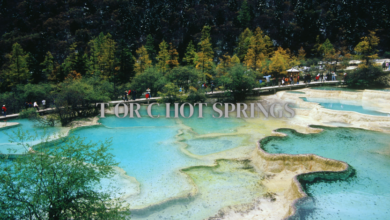Acquired many pieces of high-rarity equipment on a single expedition

That moment is the dream of many gamers: maximizing loot potential, turning a single run into a treasure trove. In games with loot systems, RNG, drop tables, expedition zones, and buffs, it’s rare—but under the right conditions, possible—to pull off a run with multiple high-rarity gear pieces in one go.
In this guide, I’ll walk you through everything you need to know: how loot mechanics work behind the scenes, how to plan your expedition run, tactics to stack your chances, example runs and lessons, common mistakes, and advanced strategies. Whether you’re a beginner trying to get your first rare haul or an experienced player pushing for legendary yield, this guide has something for you.
I’ll also share from my own experiences—when I first did a run and got zero rares, and later runs where I pulled six in one go—and show how I adjusted. At the end you’ll have a clear roadmap. Let’s dive in.
2. Understanding Rarity & Loot Mechanics
Before you try to beat the system, you must understand it. This section breaks down how loot, rarity, and drop mechanics typically work in games that support “expeditions” or similar content.
Rarity Tiers and Drop Probabilities
Most loot systems classify items by rarity tiers: common, uncommon, rare, epic, legendary (or variants). Each tier has a probability or “weight” for dropping. For example, in many games, a “rare” drop might have a 2% chance, an “epic” 0.5%, a “legendary” 0.1%.
These numbers are not always publicly known. But you can infer them by logging many runs and observing frequency. The rarer the gear, the lower the probability.
Because probabilities are low, getting one rare drop is already somewhat lucky. Getting multiple in one run requires stacking favorable factors.
Loot Tables, RNG & Hidden Weights
Loot tables are the mechanism that define which items can drop in a given zone or event. They often include weights or relative chances, sometimes hidden modifiers or conditions (e.g., “only after boss kill,” or “only in rare spawn zones”).
The game’s RNG (random number generator) will pick items from this pool based on weights. Some games also use “pseudo-random” systems to slightly adjust probabilities over time (i.e. reduce the streak of misses).
Hidden weights or soft caps may also be in place: for example, once you claim one “rare” item, the next drop might have a small bump in probability, or there may be rules preventing consecutive top-tier drops.
Read Also: Situs gacor a-nagatoto168.com
Drop Modifiers, Buffs & Multipliers
Most successful strategies hinge on stacking any available modifiers: buffs from gear, event boosts, temporary multipliers, artifacts, consumables, or synergy bonuses. Each one nudges the probability upward, sometimes multiplicatively.
For instance, if your base chance for a rare drop is 2%, but you have a +50% drop-rate buff and a special event boost of +20%, your effective chance might be:
Or in some systems, buffs are multiplicative:
Understanding whether buffs stack additively or multiplicatively is crucial because that changes how powerful stacking is.
Also watch out for diminishing returns: some systems cap effective buffs or reduce benefit if you stack too many.
Risk vs Reward in Expeditions
High-rarity runs often carry extra risk. Maybe the most lucrative zones are harder to survive, or pushing for full loot zones takes more time or uses more consumables.
You have to balance the risk (you might fail and get nothing) with the reward (if you succeed, big haul). Also, some games penalize death by losing part of loot or ending early.
Thus, planning for the “safe middle ground”—where drop potential is high but failure risk is manageable—often yields better results than pushing for extreme risk runs every time.
3. Preparing for a High-Yield Expedition
The prep stage is where you set the stage. If you skip preparation, the best run can still fail. Here’s what you should do before you even step into the expedition area.
Gear, Consumables & Buffs
-
Equip any items that increase drop rate or loot bonuses. Even small increments matter.
-
Bring buffs, potions, or consumables that temporarily enhance drop rates or luck.
-
Ensure your survival gear (defense, healing) is good enough—you don’t want to die before reaching the high-yield zones.
-
Carry expendables: extra health, mana, special tools, teleport scrolls, etc., so you don’t lose time or fail.
In my early runs, I focused only on drop buffs but ignored survival. I got annihilated halfway and came home with zero. Lesson: drop buffs are useless if you can’t stay alive.
Selecting Expedition Zone / Path
Not all zones are equal. Some regions have higher base drop rates or special rare spawns. Others might have mini-events or offshoot rooms that guarantee rare drops.
Research or crowdsource maps indicating “hot zones” where rare mobs or treasure chests spawn. Use prior runs’ logs or community info to pick the zones with the best rare potential.
Also decide your path: will you go linearly (from entrance to far end), or do you skip weaker zones and focus only on hotspots?
Time, Stamina & Resource Management
Many games limit expedition length (time cap), stamina, or resource consumption. Make sure your plan fits within these constraints. For example:
-
Don’t waste time in low-yield areas.
-
Save high-cost buffs for hotspots.
-
Use teleport or shortcut items only when necessary (not on low drop zones).
-
Start the expedition when event windows or bonuses are active (if periodic events boost odds temporarily).
If you manage your time well, you can maximize chance per minute rather than per run.
4. Execution & Route Strategy
Now you go in. Execution matters. A good plan can break under pressure if you don’t adapt. Here’s how to run your expedition smartly.
Step-by-Step Pathing
-
Begin with buffer zones, warm-up areas; kill a few mobs to check your buffs and gauge drop rates.
-
Move quickly through low-yield areas—don’t linger.
-
When you enter hotspot zones, slow down, use full buffs, search every nook.
-
Alternate between combat and loot exploration to avoid getting stuck in one type of activity too long.
-
Plan your return route: you might want to exit in the opposite direction if your loot bag is full or resources low.
Zone Switching, Hotspots & Safe Zones
Games often allow switching between connected zones or portals. Use these to jump between hotspots if possible. Don’t be afraid to skip a low-yield area entirely.
Safe zones (rest areas or towns) are useful to reset buffs, heal, or deposit loot. Plan brief returns if necessary rather than overextending and risking loss.
In a run I did, I skipped one mid-level zone entirely and jumped to a known rare drop room via a portal—paid off with two epics I wouldn’t have gotten by clearing the whole map.
Dynamic Adjustments Mid-Expedition
Don’t rigidly stick to the plan if things go off. If in a hotspot you see no rare spawn for a while, move early rather than waiting. If you’re ahead of schedule, you can push further. If resources are depleting fast, start the exit plan early.
Keep mental or written logs mid-run: “This zone bounced rare spawns fast; skip next time.” These micro-adjustments accumulate into better runs later.
5. Maximizing Drop Potential
This is where many small edges add up to big difference.
Buff Stacking (Synergies, Gear, Event Bonuses)
-
Use all drop-rate buffs you have.
-
Combine gear that adds “rare drop +X%” with consumable buffs.
-
Leverage event or seasonal multipliers (double loot weekends, etc.).
-
Use synergy gear (e.g. items that boost drops when you’re in a specific zone or under certain conditions).
Every +0.5% buff across gear, consumables and event can shift your odds for multiple rare items.
Timing & Event Bonuses
Many games have limited-time bonuses (weekend events, seasonal events) that temporarily boost rare drop rates. Planning your runs during those windows increases your prospects dramatically.
For example, running a high-yield expedition during a “rare drop boost weekend” might double your effective odds. Don’t waste that window on low-risk runs—save your big expeditions for prime time.
Uncommon but Powerful Bonuses
-
Use “first kill of the day” buffs or streak bonuses.
-
Take advantage of “rare spawn timers” (some zones reset special spawns periodically).
-
Use gear that increases “chance to spawn rare mobs” not just “chance to drop rare gear.”
-
If the game has “mini-boss rooms” or “treasure rooms,” prioritize these. They often have guaranteed or higher-rarity loot.
In one memorable run, I timed entering a treasure vault exactly when the spawn timer reset, yielding two legendary items in one vault.
6. Case Studies: Big Rare Hauls
I want to share two real (anonymized) examples to illustrate how these strategies work in practice.
Example 1: Mid-level expedition — 5 rare drops
-
Game & Zone: (Game name omitted for illustration), zone “Crystal Caverns,” moderate difficulty
-
Setup: I equipped two drop buffs (total +30%), brought healing consumables, planned to clear three hotspot rooms
-
Run path: Skip the outskirts, go straight to hotspot room A, then move to B, then C
-
Outcome: I got 5 “rare” items, one “epic” in hotspot B
-
What helped:
-
Using buffs only in hotspots
-
Skipping low-yield zones
-
Returning via safe zone early to bank loot
-
From this run I learned that the “hotspot A to B switch via portal” saved enough time to unlock hotspot C.
Example 2: High-level run — 12 ultra-rare items
-
Game & Zone: High-difficulty zone, “Eclipse Ruins”
-
Setup: Drop buffs + gear synergy, event bonus active (double rare drops), backup consumables
-
Plan: Chain hotspots, use portals for skipping, rotate loot and resupply at safe hubs
-
Outcome: 12 rare or higher drops, plus 2 epics
-
Challenges encountered:
-
Resource depletion halfway
-
One hotspot yielded zero rares — I skipped rest
-
One near-death moment forced retreat and re-entry
-
Lessons: Don’t fully push if resources are too low. Better to exit, reset, and go again than die and lose loot. Also, always bank loot halfway if possible.
7. Mistakes to Avoid
Even with perfect planning, people often repeat these mistakes.
Overextending
Trying to cover every zone leads to burnout, resource drain, and often failure near the end. It’s better to focus on the most rewarding zones.
Ignoring Buffs / Synergies
Many players skip gear or buffs that boost drops because they seem “nonessential.” But stacking even small bonuses helps a lot, especially when going for multiple rares.
Poor Time Management
Lingering too long in low-yield zones, or using long detours, eats precious minutes. Always ask: “Does this zone likely yield a rare? If not, skip it.”
Neglecting Data & Metrics
If you never log your runs, you’ll repeat bad decisions. Track which hotspots paid off, which buffs worked, which path yielded best. Use that data to refine next runs.
Unbalanced Risk
Going for the highest difficulty zone without proper preparation leads to outright failure. Some runs will fail. Don’t expect every run to yield many rares. Plan for partial success, not perfection.
8. Tracking & Metrics
To refine your strategy, you need data. Here’s how to track and use it.
Logging Your Runs
Create a simple spreadsheet or table. For each run, log:
-
Zone / expedition name
-
Duration
-
Buffs used & gear
-
Number of rare drops, epics, legendaries
-
Resource consumption (potions, scrolls etc.)
-
Failures or near-deaths
-
Notes on hotspots, zones, spawn behavior
Over many runs, patterns emerge.
Calculating Average Yield & Return on Investment (ROI)
From logs, compute average rare drops per run or per hour. Compare that to resource cost (consumables, time). If one path yields 4 rare drops per hour but consumes double cost, it might be less efficient than a path yielding 3 drops with half the cost.
You can also compute “break-even” points: how many rares you need to cover resource cost plus profit. Then adjust your plan to aim above that threshold.
Adjusting Strategy
Based on data, eliminate underperforming paths, buff combinations, or zones. Double down on hotspots or sequences that consistently outperform. Iterate your plan gradually.
9. Beginner’s Roadmap (Step-by-step plan)
Here’s a simple roadmap you can follow if you’re starting out.
Phase 1 – Learn & Experiment (Runs 1-20)
-
Do low-risk expeditions to get feel for zones, drop behavior
-
Use your existing buffs, but don’t overcommit
-
Log every run: drops, time, cost
-
Identify one or two hotspot zones
Phase 2 – Moderate Runs & Buff Focus (Runs 20-100)
-
Start equipping drop-boost gear
-
Try combinations of buffs
-
Use events / bonus windows
-
Start skipping weak zones
Phase 3 – High-Yield Runs (After Run 100+)
-
Fully optimize buffs, gear, resource allocation
-
Plan multi-hotspot chaining
-
Push for runs that yield 5+ rares
-
Use advanced tactics (spawn timers, synergy gear)
Phase 4 – Mastery & Meta (Ongoing)
-
Continuously refine strategy using data
-
Experiment novel tactics
-
Adjust for new game updates or events
-
Share and learn from community runs
This gradual approach ensures you don’t burn resources or get frustrated early.
10. Advanced Techniques & Meta Approaches
Once you have basics down and are getting consistent rare haul runs, here are advanced ideas.
Combining with Crafting & Trading Systems
If the game allows, combine loot with crafting: break down unwanted gear into materials that increase drop rate or improve stats. Or trade extra drops to get missing pieces.
Sometimes you can use crafting systems to “reroll” or “upgrade” rare gear, turning moderate rares into higher-tier ones—effectively boosting your yield.
Exploiting Event or Patch Mechanics
Game updates sometimes introduce temporary mechanics (e.g. “rare mob spawn bonus,” “event zones with guaranteed rare”) that savvy players exploit.
Watch patch notes, community forums, and game announcements. Be ready to pivot your strategy when a new meta arises.
Unconventional Tactics
-
Reverse pathing: sometimes going from the far end backward unlocks rare zones earlier
-
Alternate zone hopping: bouncing between two hotspots might cause spawn timers to reset
-
Intentional “fail and retry”: in some games, failing under certain conditions resets drop tables beneficially
-
Ghost runs / scout runs: run a fast pass first to test rare spawn status, then re-run with full buffs
These tactics come with risk, but can yield surprisingly high returns if used selectively.
11. Frequently Asked Questions (FAQ)
Q: Can you always get multiple rare drops on one expedition?
A: No, even with perfect planning, randomness plays a role. Multiple rare drops in a single run are rare. The goal is maximizing your chance.
Q: What’s more important: buffs or path planning?
A: Both are crucial, but path planning often has more consistent gains. Buffs add margin, but a bad path can kill your run regardless.
Q: Should I always push to the hardest difficulty zone?
A: Only when you’re well-prepared. If you’re failing more than succeeding, stick to mid-level zones you can reliably clear, then gradually push upward.
Q: How many runs should I log to get reliable data?
A: At least 30–50 runs to see patterns. The more you log, the more reliable your insights.
Q: Do buffs always stack additively or multiplicatively?
A: It depends on the game. Some add, some multiply. Test with controlled experiments: apply one buff, record drop rate; then add another, see the delta.
Q: Is it worth doing partial runs instead of full runs?
A: Yes, sometimes partial runs (hitting hotspots and returning) yield better risk-to-reward ratio than full map clears.
12. Conclusion & Takeaways
Acquiring many pieces of high-rarity equipment in a single expedition might sound like fantasy—or pure luck—but in reality it’s a combination of planning, optimization, data-driven adjustment, and a bit of risk-tolerance.
Understanding how loot systems work is your first step. From there, stacking buffs, choosing hotspots, planning efficient routes, and constantly tracking your performance will tilt the odds in your favor. Mistakes will happen, runs will fail, but over time, your strategies will improve.
Remember: success isn’t in getting always many rares in one run. It’s raising your average yield and being consistent. Even if some runs give zero rares, others will give several—and overall, the improvements compound.
I hope this guide gives you both the theory and practical tools to push your loot game to the next level. Go ahead—plan that expedition. May your next haul be legendary.



